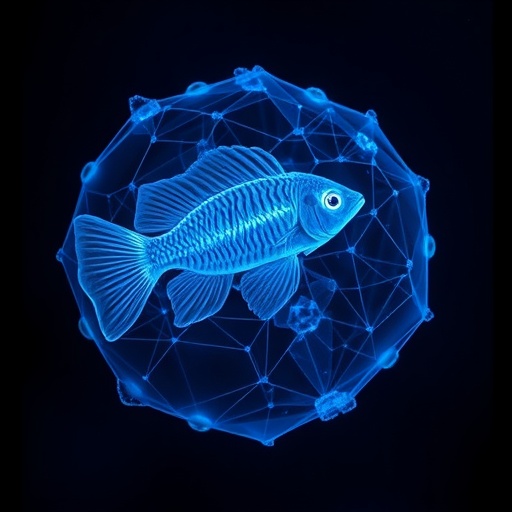Microplastics have emerged as a significant environmental crisis, gaining attention from researchers, policymakers, and the public alike. In a groundbreaking study highlighting this pressing issue, S. S. and J. Patterson have meticulously assessed microplastic contamination in the marine bivalve, Meretrix aurora, found in the Punnakayal Estuary and along the Tuticorin Coast in Southeast India. Their research provides insight into the extent of microplastic pollution in these vital ecosystems, shedding light on the possible implications for marine life and human health.
The study reports an alarming concentration of microplastics in the tissues of Meretrix aurora, indicating the widespread prevalence of these tiny plastic particles in the marine environment. Being filter feeders, these bivalves accumulate microplastics in their bodies, posing potential health risks not only to the organisms themselves but also to the predators that consume them. The implications of such contamination are dire, raising questions about the safety of seafood for human consumption, particularly in regions reliant on marine resources for their livelihoods.
Researchers have noted that microplastics can originate from various sources, including the degradation of larger plastic debris, textiles, and industrial waste. Once released into the marine environment, these particles can be ingested by marine organisms, where they may disrupt physiological processes and bioaccumulate in the food chain. The studies conducted by S. S. and Patterson present formidable evidence of microplastic ingestion by marine life, with their findings highlighting the need for urgent action to mitigate plastic pollution.
The investigation involved extensive sampling in both the Punnakayal Estuary and the Tuticorin Coast, utilizing sophisticated methods to quantify and characterize the microplastics found in the bivalve tissues. The researchers employed a combination of physical separation techniques and spectroscopic analysis, ensuring the reliability of their results. This rigorous approach underscores the importance of adopting advanced methodologies when examining contaminants in biological samples, fostering a deeper understanding of the environmental crisis at hand.
Moreover, the findings reveal a concerning correlation between microplastic concentration and environmental factors such as urbanization and industrial activity in the vicinity. Areas experiencing heightened anthropogenic pressure exhibited significantly higher levels of microplastic contamination, further illuminating the role of human actions in exacerbating this global issue. This underscores the crucial need for sustainable practices and heightened public awareness regarding waste management and pollution.
As the study progresses, researchers emphasize the interplay between microplastics and various environmental parameters, such as temperature and salinity, which can influence the behavior and persistence of these pollutants in marine environments. Understanding these interactions is essential for developing effective strategies to combat microplastic pollution and minimize its impact on marine ecosystems and human health.
The alarming results of this research call for immediate attention from the scientific community, policymakers, and the general public to address the rampant issue of plastic pollution. Action plans that promote cleaner production practices, enhanced recycling programs, and public education initiatives could significantly reduce plastic waste entering marine environments. By fostering a culture of sustainability, society can help mitigate the pervasive threat posed by microplastics.
To combat this crisis, international collaboration is essential. Countries must work together to establish stringent regulations on plastic production and waste management while promoting research initiatives focused on understanding the impact of microplastics. It is imperative to support legislation mandating the reduction of single-use plastics and incentivizing innovation in alternative materials to lessen dependency on conventional plastics.
Public engagement plays a vital role in addressing microplastic contamination. Individuals can contribute by participating in beach cleanups, supporting sustainable brands, and advocating for policies that aim to reduce plastic waste. By raising awareness of the issue, communities can take collective action, leading to broader societal changes that drive a reduction in plastic pollution.
In conclusion, the research conducted by S. S. and Patterson serves as a vital contribution to the ongoing discourse on microplastic pollution and its implications for marine ecosystems and human health. Their findings call for a comprehensive approach to understanding and addressing the multifaceted challenges posed by microplastics. As society grapples with the consequences of plastic pollution, it is crucial to foster an environment that prioritizes sustainability and responsible consumption, ensuring a healthier planet for future generations.
As the world continues to grapple with the growing plastic crisis, the insights provided by this research are essential for shaping effective strategies to combat microplastic pollution and its detrimental effects on marine life and food security. This critical study highlights the urgent need for a collaborative effort to safeguard the oceans and the organisms that inhabit them from the ever-growing threat of microplastics.
By engaging in meaningful dialogue about the issues raised in this study, stakeholders across various sectors can foster a more sustainable future, demonstrating that collective action can lead to tangible improvements in preserving marine biodiversity and public health in light of alarming environmental challenges posed by plastic pollution.
Subject of Research: Microplastic contamination in marine bivalves
Article Title: Assessment of microplastic contamination in Meretrix aurora from Punnakayal Estuary and Tuticorin Coast, Southeast India.
Article References:
S, S., Patterson, J. Assessment of microplastic contamination in Meretrix aurora from Punnakayal Estuary and Tuticorin Coast, Southeast India. Environ Monit Assess 197, 1374 (2025). https://doi.org/10.1007/s10661-025-14820-x
Image Credits: AI Generated
DOI: https://doi.org/10.1007/s10661-025-14820-x
Keywords: Microplastics, Meretrix aurora, marine pollution, environmental impact, bivalves, Punnakayal Estuary, Tuticorin Coast, Southeast India.




